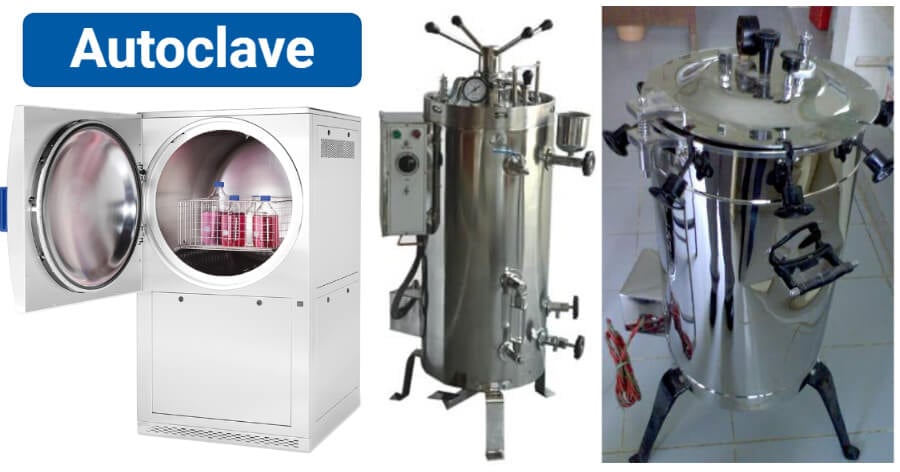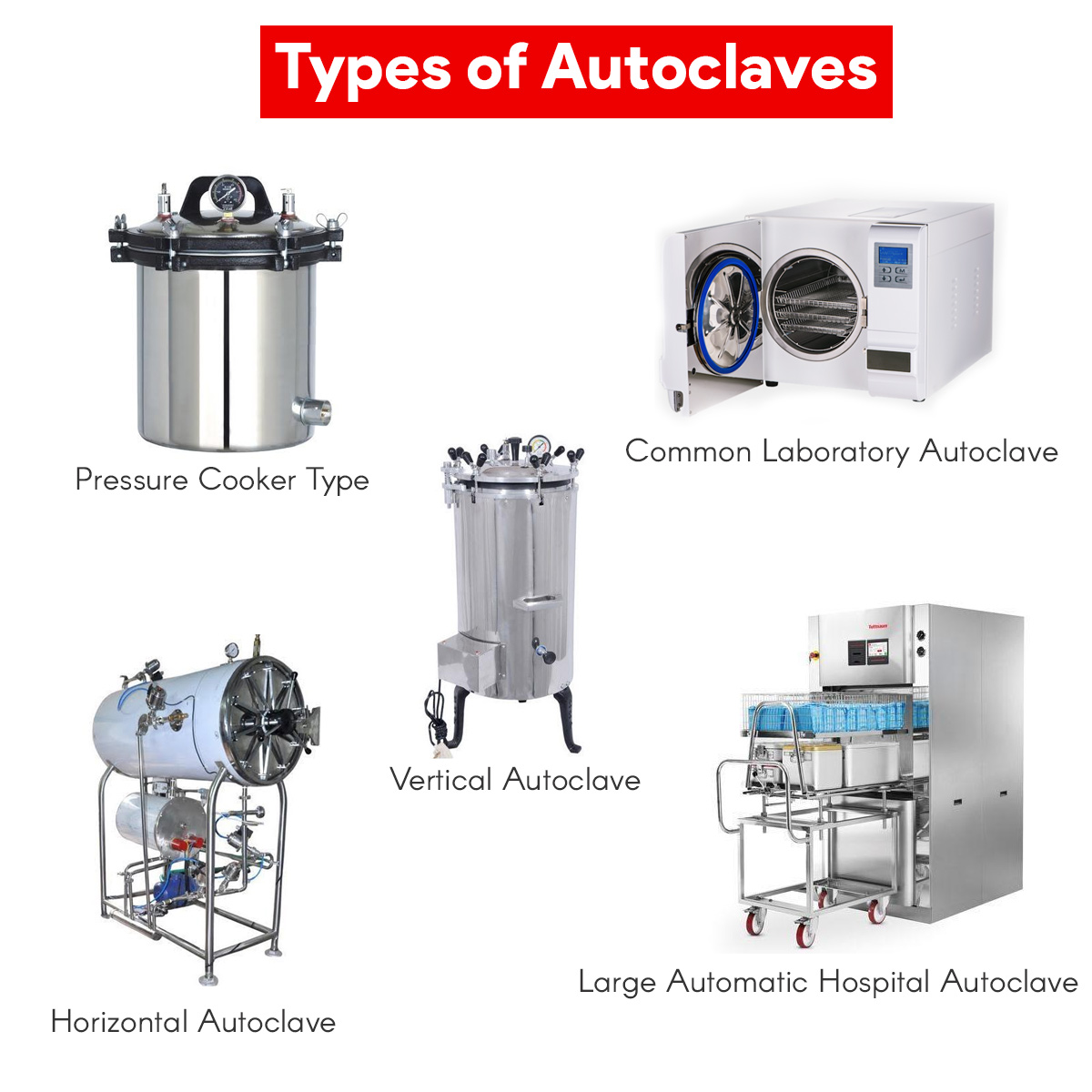Describe the Use of an Autoclave in Microbiology Laboratory
An autoclave is a sterilization mechanism that uses pressure and steam to prevent microorganisms and spores from surviving and spreading. Uses of Autoclave.

Important Parts Of A Vertical Autoclave Steam Sterilizer Autoclave Vertical Autoclaves
The autoclave heats materials placed inside to approximately 121 deg C using steam and a minimum pressure of 15.

. Autoclave Sterilizers are used to decontaminate some biological waste and sterilize the means tools and laboratory ware. Incineration It is an effective method of sterilization in microbe cultures. Their purpose in the microbiology laboratory is either to prepare culture media reagents and equipment.
The identification of pathogens and germs is at the foreground of the demanding work in a microbiology laboratory. Autoclaves use steam as their sterilization agent. Also known as a steam sterilizer an autoclave is an insulated pressure chamber in which high-pressure steam is used to sterilize decontaminate laboratoryclinical material or itemsFor different types of material sterilization time and temperature may vary depending on recommendations.
For preparation of certain reagents the glasswares after proper cleaning and rinsing with distilled water are required to be dried. Autoclaves or sterilizers are vessels that use pressurized steam to eradicate micro. During this phase the autoclaves control system is programmed to close the exhaust valve thereby causing the interior temperature and pressure to increase to the desired setpoint.
Autoclaves operate at high temperature and pressure in order to kill microorganisms and spores. Autoclaves provide a physical method for disinfection and sterilization. It increases the pressure and hence the temperature is raised above the normal point for sterilizing process.
Plastic tubes and pipette tips. Or for decontaminating biohazardous waste materials. Autoclaves operate at high temperature and pressure to kill microorganisms and spores.
In microbiology the main purpose of autoclaves is to sterilise and disinfect objects which is important for the prevention and control of infectious diseases. Autoclave is particularly useful for media-containing water that cannot be sterilized by dry heat. See how autoclaves are used in food preparation medical.
An autoclave is a pressurized chamber used for the process of sterilization and disinfection by combining three factors. Autoclaves or sterilizers are vessels that use pressurized steam to eradicate micro-organisms. Microbiology laboratory equipment and their use - microbiology laboratory techniques - This video is about the microbiology laboratory tour including the mic.
The end of the microbe loop is exposed to red hot flamethus it kills microorganism. It is the method of choice for sterilizing the following. Some principles of chemical disinfectants.
Autoclave definition medical. Regulated medical waste that might contain bacteria viruses and other biological material are recommended to be inactivated by autoclaving before disposal. Autoclave is a laboratory instrument to help in the physical method of sterilization by killing harmful bacteria viruses fungi and spores.
Time pressure and steam. Purchasing a laboratory sterilizer from Microbiology International insures you are receiving the highest quality and most advanced autoclave. Every day a large number of experiments are carried out in the laboratory for this purpose.
They are used to decontaminate certain biological waste and sterilize media instruments and lab ware. How does autoclave work for Laboratory. Cost Industrial Autoclave Choosing a Microbiology Laboratory AutoclaveSterilizer.
They are dried inside the drying oven at 100C till the glasswares dry up completely. These are mainly used in industrial and scientific processes to perform sterilization of different materials. Nature of material being disinfected organic matter biofilms pH and temperature.
Producing aerospace composites without an autoclave using vacuum-bag-only VBO atmospheric pressure is nothing new. Autoclavable plastic containers. Microbiology International carries a complete line of laboratory sterilizer units including vertical bench top high capacity double door or pass through autoclave units and specially designed BSL-3 Autoclave units.
Extremely diverse culture media are produced containers and fluids need to be autoclaved and contaminated waste needs to be deactivated. The autoclave equipment used in a microbiology lab or medical lab is usually a small box-shaped device similar in appearance to a microwave. The program then maintains the desired temperature dwells until the desired time is reached.
An autoclave is basically a pressure chamber used to carry out any process that requires highly elevated temperature and pressure such as medical waste disposal andor medical equipment sterilization. An agent that kills or inhibits growth of pathogenic microbes and is used only on inanimate objects. They work with a combination of steam pressure and time.
The autoclave is to most common equipment you can find in the laboratory in vitro cultures. In other words Autoclave is equipment used to sterilize various solutions objects containers etc. Microbiologists typically employ these machines in order to sterilise instruments before using them on living tissue or.
Until laboratory autoclaves are equipped with a means for accelerating the cooling of loads it is difficult to offer any advice on the unloading hazard other than that already given in some interim advisorynotes bythis Subcommitteeonthesafe and efficient use of laboratory autoclaves in which the factors influencing the performance ofautoclaves in. Hot Air oven The application of hot air oven is dry materials like glassware heavy metals thermostable materials etc. Contact between disinfectant and area to be disinfected.
This ensures that given materials are effectively sterilized for use. It is the easiest way to destroy microbes in metals.

How Does An Autoclave Work Lab Instrument Manufacturer

Autoclave Definition Parts Principle Procedure Types Uses


Comments
Post a Comment